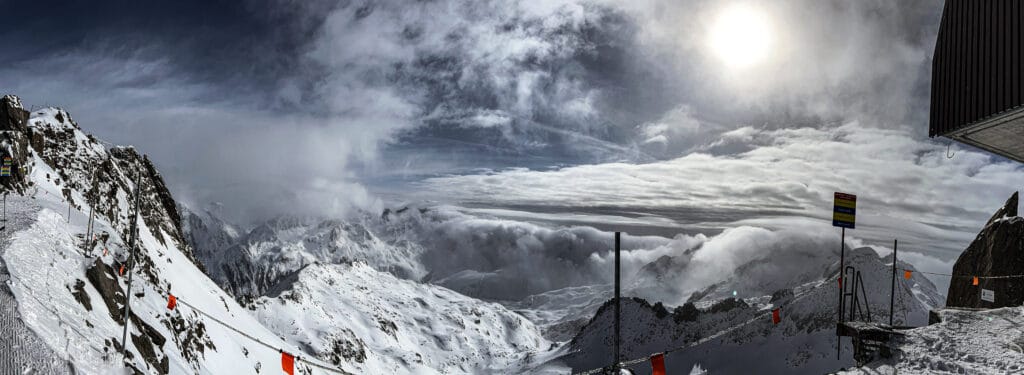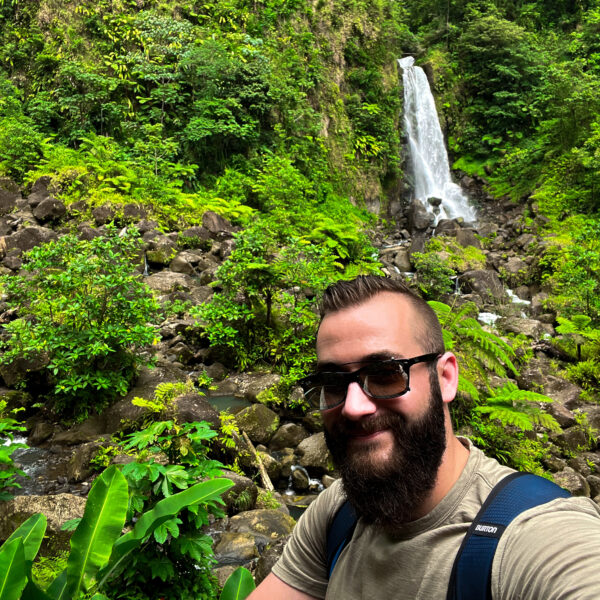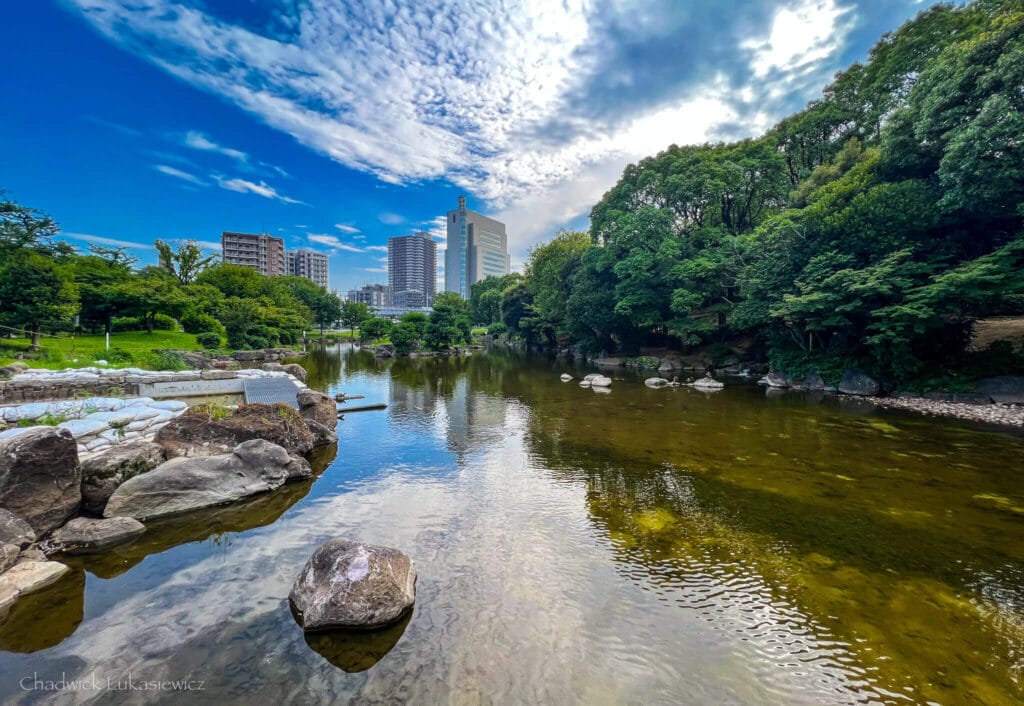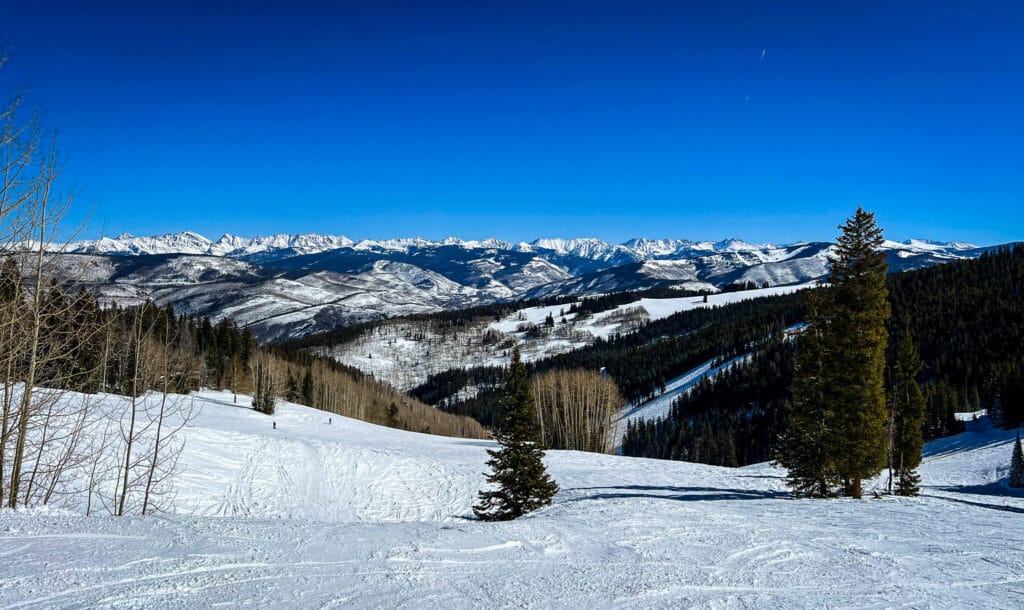Picture it: You’re standing atop a pristine slope in the Swiss Alps, snowboard strapped to your feet, the crisp alpine air filling your lungs with possibility. For many, it’s pure exhilaration.
For us ADHD thrill-seekers? It’s something even more special – it’s the moment our constantly racing minds finally find perfect clarity in the beautiful chaos of mountain adventure.
Did you know that ADHD is 3-4 times more common in elite athletes than in the general population? Research suggests 7-8% of top athletes have ADHD, compared to just 0.8-2.4% of the public (Ekman, Hiltunen, & Gustafsson, 2021). As both a Licensed Professional Counselor and late-diagnosed ADHDer (who later discovered I’m actually AuDHD), I can tell you this is no coincidence.
Our novelty-seeking, risk-loving minds are perfectly wired for these high-octane experiences, making us uniquely suited for mountain adventures.
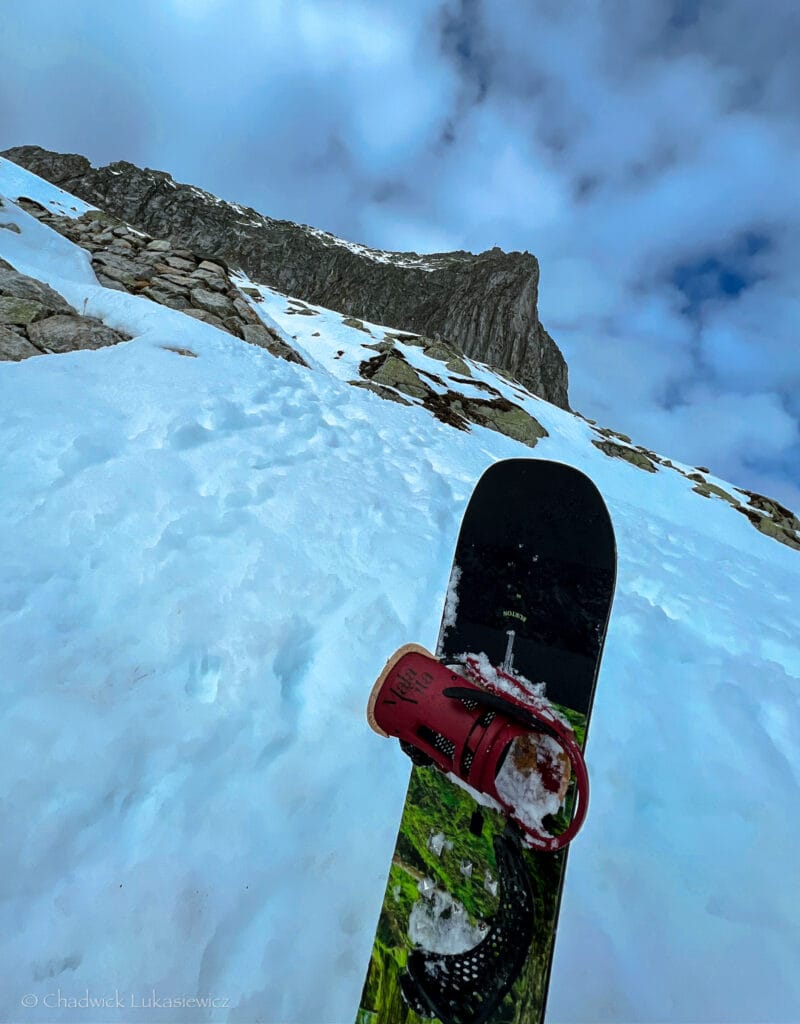
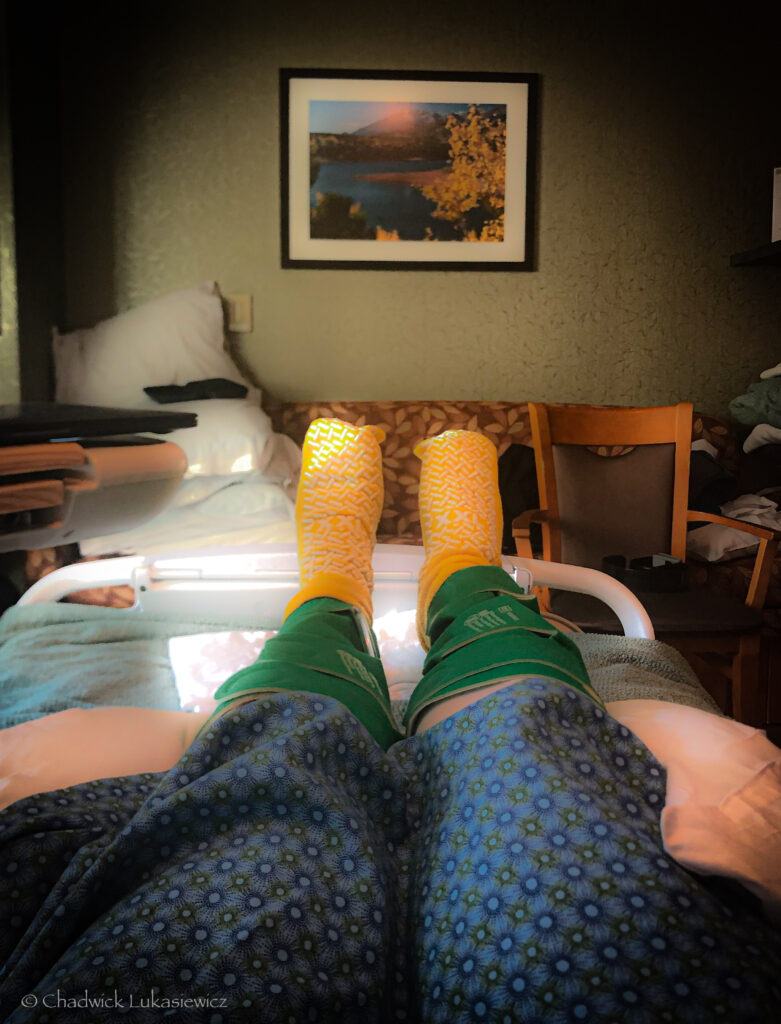
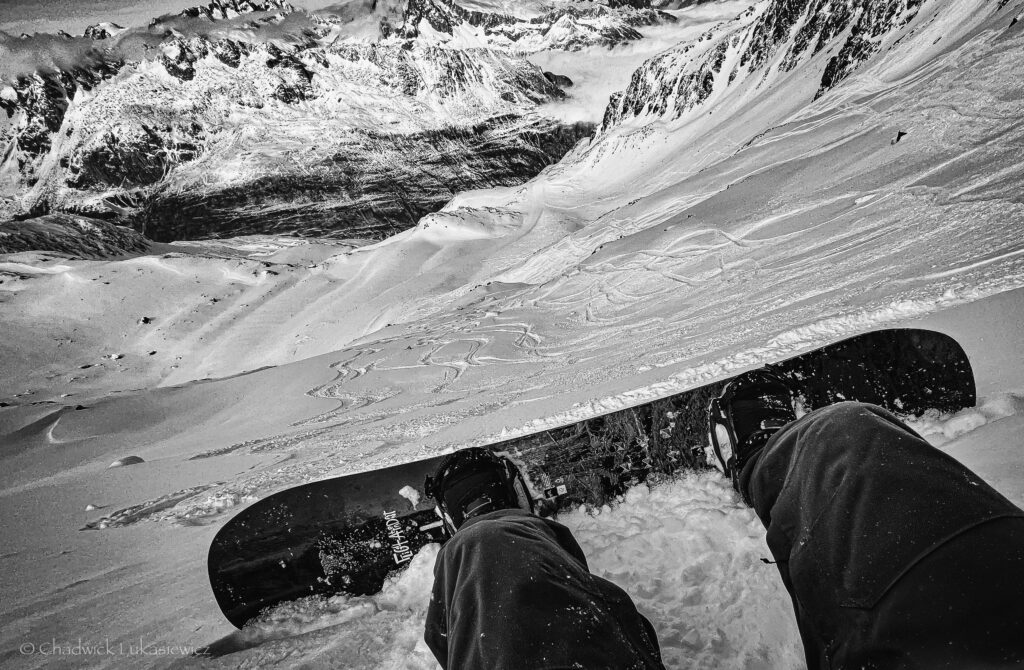
After two major spine surgeries – a microdiscectomy at 24 and a lumbar fusion at 25 – I was told my snowboarding days might be over. But here’s the thing about ADHD minds: we don’t just think outside the box; we redefine what’s possible.
Today, I’m not just back on the slopes; I’m experiencing the Swiss Alps in ways that showcase how our neurodivergent traits can become our greatest strengths. Whether you’re a seasoned rider or considering your first mountain adventure, let me show you how to transform your ADHD traits into snowboarding superpowers.
Ready to carve your own path through powder and possibility? Let’s dive into my favorite ADHD snowboarding tips!
The ADHD Advantage on the Slopes

Let me share something fascinating I discovered while carving through fresh powder on the Gemsstock at Andermatt: our ADHD traits that might feel challenging in everyday life become absolute superpowers on the mountain.
That intense need for stimulation? Perfect for mastering new techniques. Time blindness? It melts away when you’re fully immersed in the perfect run.
Studies suggest that ADHD brains process sensory information differently, often seeking higher levels of stimulation to achieve optimal focus. On a snowboard (or skis), this translates into some remarkable advantages (Schulze, Lux, & Philipsen, 2020).
Natural ADHD Traits That Enhance Performance
- Novelty Seeking
- Drives rapid skill progression
- Encourages exploration of new terrain
- Maintains high engagement levels
- Fuels continuous improvement
- Hyperfocus Potential
- Enables deep technique mastery
- Creates flow state opportunities
- Enhances body awareness
- Promotes rapid learning
Converting “Challenges” into Mountain Mastery

Remember how that ADHD impulsivity often gets us into trouble?
On the slopes, it transforms into calculated risk-taking and quick decision-making. During my first day at Andermatt ski, my “impulsive” choice to follow a local rider led to discovering a hidden powder stash that became my favorite run of the trip.
Here’s how our unique traits become advantages:
- Risk Assessment: Our quick-processing ADHD minds excel at rapid terrain evaluation
- Pattern Recognition: Helps read snow conditions and choose optimal lines
- Sensory Integration: Enhanced awareness of body position and snow feel
- Dynamic Adaptation: Quick adjustments to changing conditions
The Science Behind the Stoke
Research in sports psychology has shown that adrenaline-based activities can actually help regulate ADHD brains. The combination of physical exertion, intense focus, and natural dopamine release creates what I call the “perfect storm” for peak performance (Groen, et al., 2020; Schulze et al., 2020).
Quick Tip: Notice when your hyperfocus kicks in on the mountain. These are your optimal learning windows – use them to practice new techniques or explore challenging terrain.
Leveraging Your ADHD Brain on the Slopes
- Morning Energy: Channel that early ADHD energy into first tracks
- Afternoon Focus: Use natural dopamine peaks for skill progression
- Evening Wind-Down: Leverage post-ride calm for recovery and reflection
Remember, what others might see as “too much” – too much energy, too much enthusiasm, too much intensity – becomes exactly enough when you’re flying down a Swiss mountainside.
Our ADHD brains aren’t just adapting to the sport; they’re ideally wired for it.
From Therapy to Powder: A Professional’s Perspective
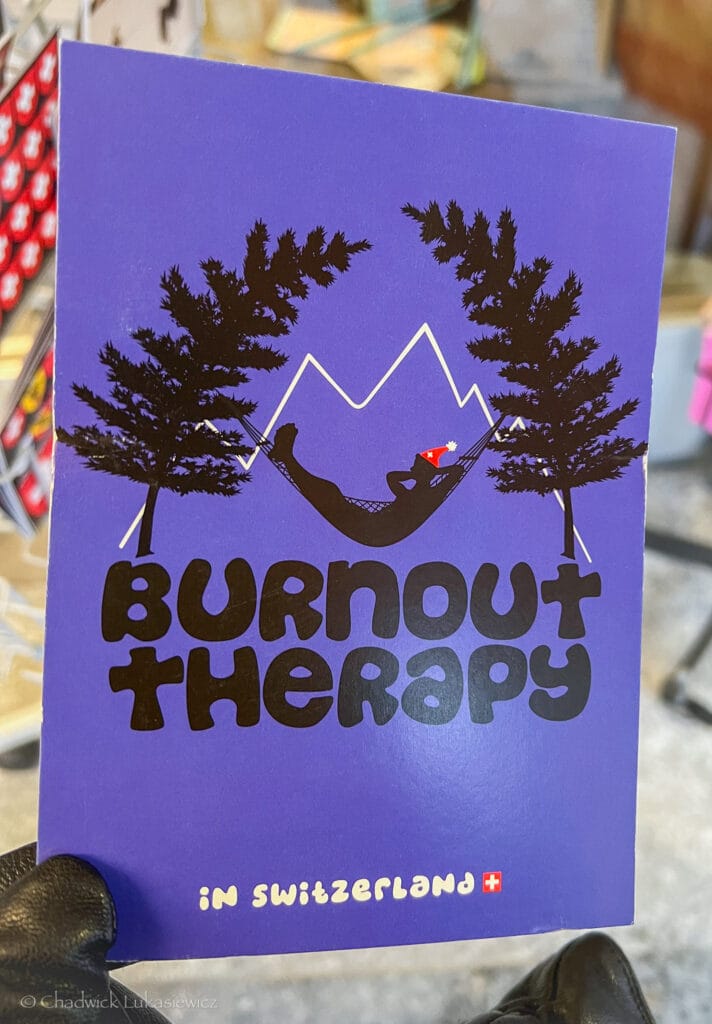
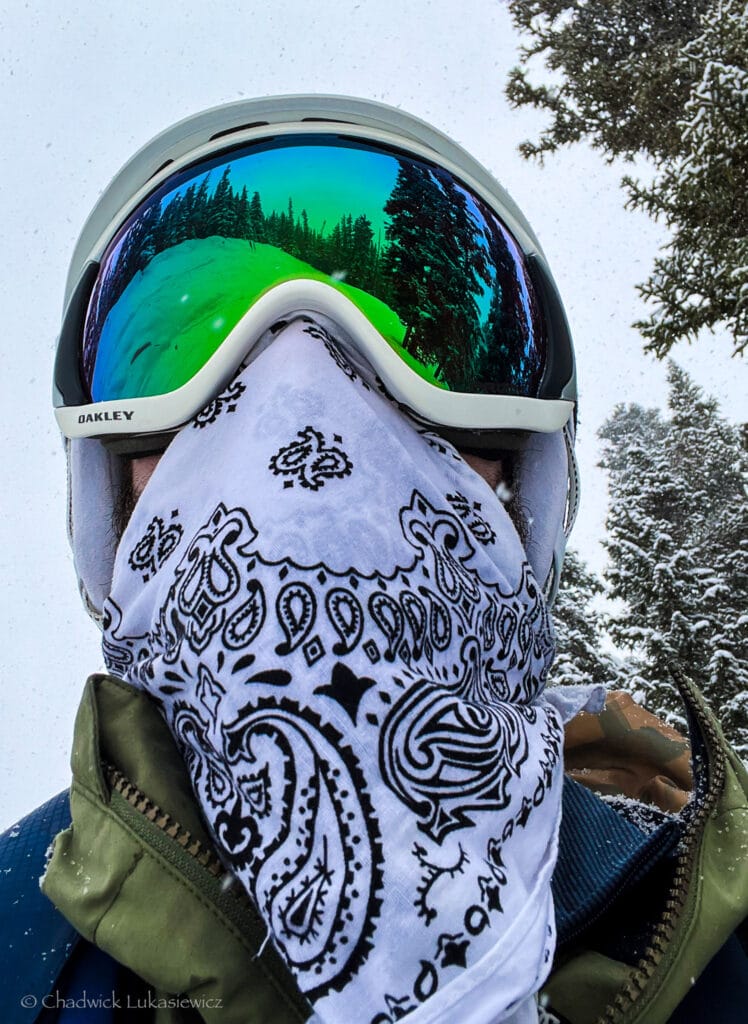
As both a trauma therapist and someone who returned to snowboarding after a spinal fusion, I’ve discovered something remarkable: the mountains offer a perfect laboratory for applying clinical techniques in real-world conditions.
Those EMDR bilateral movements? They translate beautifully into edge transitions. CPT challenging beliefs? It nails challenging those “I can’t” beliefs that often hold us back.
Integrating Clinical Techniques on the Slopes

Let me share a personal breakthrough moment at Andermatt-Sedrun-Disentis. Standing at the top of a challenging run, my post-surgery anxiety spiking, I applied a modified EMDR technique I’d developed:
1. Bilateral Stimulation Through Movement
- Gentle side-to-side weight shifts
- Rhythmic breathing patterns
- Tactile focus on board edge pressure
- Progressive muscle relaxation
2. CPT-Inspired Confidence Building
- Identifying “stuck points” about ability
- Challenging limiting beliefs
- Creating evidence-based self-talk
- Building adaptive thinking patterns
3. Mountain Connection Practice
- Grounding through natural surroundings
- Drawing strength from breathtaking panoramas
- Feeling the mountain’s steady presence
- Transforming fear into mountain partnership
Mountain Therapy in Action
The therapeutic benefits of alpine environments are well-documented, but for neurodivergent minds, they offer something extra special. The combination of physical engagement, sensory stimulation, and natural beauty creates what I call a “therapeutic trifecta.”
Key Benefits:
- Natural anxiety regulation through controlled exposure
- Immediate feedback for mindfulness practices
- Physical embodiment of therapeutic concepts
- Environmental support for emotional processing
Adapting Clinical Tools for the Slopes

Here’s how I’ve modified traditional therapy techniques for mountain use:
1. Grounding Exercises
- Focus on board-snow contact
- Notice temperature sensations
- Engage with surrounding sounds
- Connect with mountain movement
2. Anxiety Management
- Progressive exposure to steeper terrain
- Controlled breathing during lift rides
- Positive visualization before runs
- Safety behavior modification
3. Mindfulness Integration
- Present-moment awareness during runs
- Body scan techniques while riding
- Sensory engagement exercises
- Flow state development
Therapist Tip: Create a “safety signal” – a physical anchor (like touching your jacket zipper) that reminds you you’re in control and present in the moment.
Professional Insights for Mountain Mindset
The mountains teach us what we often strive to convey in therapy: that growth happens at the edge of our comfort zone, but just at the edge.
Your ADHD brain’s natural tendency to seek novelty makes you perfectly equipped for this kind of graduated challenge system.
Remember: Just as we work in therapy to reframe challenges as opportunities, each run becomes a chance to practice self-compassion, build resilience, and celebrate progress – no matter how small.
Post-Surgery Success: Returning to the Mountains

There’s something poetic about standing atop the Swiss Alps when just three years earlier, I wasn’t sure I’d ever snowboard again. After two major spine surgeries – culminating in a lumbar fusion at 25 – the journey back to the slopes was both a physical and mental marathon.
But for those of us with ADHD minds, impossible is often just another challenge to redefine.
The Rehabilitation Journey
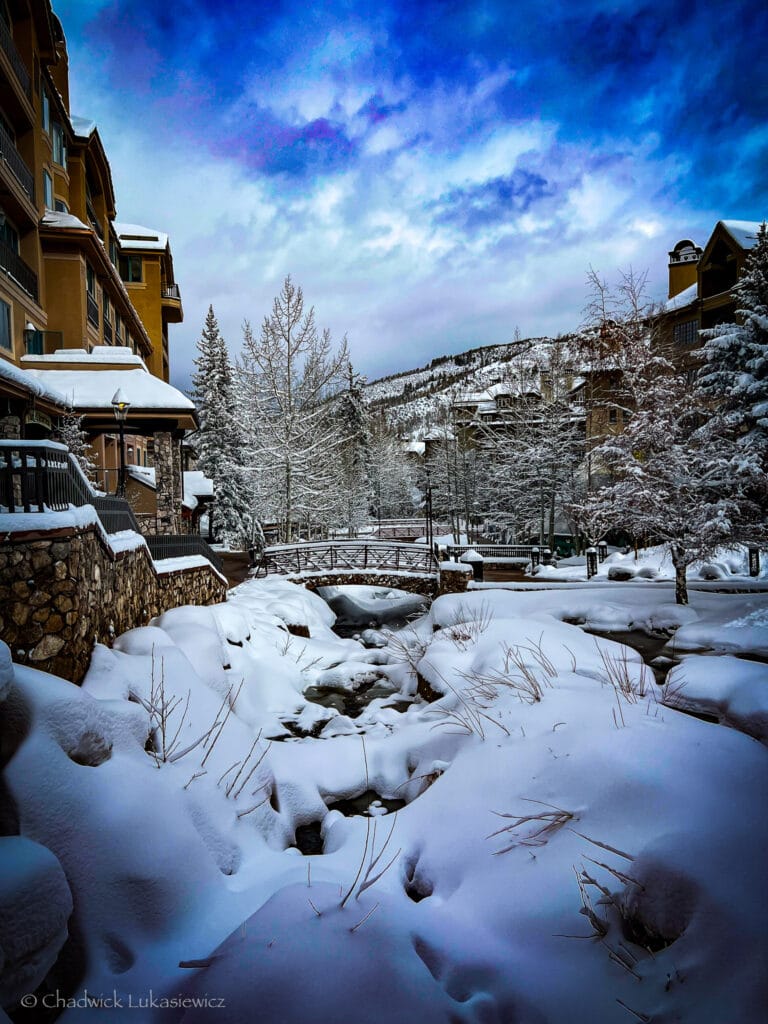

My return to snowboarding began with countless grueling days on my home mountains in Colorado. Breckenridge, Beaver Creek, and Vail, in particular, became my rehabilitation grounds – each run a small victory, each fall a lesson in patience and persistence.
Let me be honest: there were days when the mountain felt like an insurmountable opponent. But here’s what I learned about recovery with an AuDHD brain:
1. Progressive Challenge System
- Start with familiar, gentle runs
- Build confidence through repetition
- Use hyperfocus for technique refinement
- Celebrate every small progression
2. Mind-Body Connection
- Listen to physical feedback signals
- Practice mindful movement patterns
- Develop new muscle memory
- Honor recovery days
3. Embracing the Journey
- Accept that recovery isn’t linear
- Remember your body is relearning, not failing
- Transform frustration into focused determination
- Give yourself permission to progress at your own pace
Building Back Confidence
The mental game of returning to sport after surgery can be as challenging as the physical recovery. Here’s how I approached it:
1. Mental Strategies:
- Set micro-goals for each session
- Document progress through photos and journals
- Use visualization techniques during rest periods
- Transform fear into focused attention
2. Physical Adaptation:
- Modified techniques for spine protection
- Core strengthening exercises
- Balance and proprioception work
- New movement patterns development
The Alpine Dream Realized

Standing atop the Gemsstock in Andermatt wasn’t just about fulfilling a lifelong dream of riding the Swiss Alps – it was tangible proof of how far I’d come. What once seemed like a distant “someday when I’m older” dream became reality through persistence, adaptability, and yes, that characteristic ADHD determination to prove the impossible possible.
Recovery Insight: Sometimes the longest runs start with the smallest turns. Trust your body’s intelligence and your mind’s resilience.
Tips for Others Returning After Injury
1. Listen to Your Body
- Learn your new physical language
- Respect pain signals
- Understand the difference between discomfort and danger
- Build trust with your healing body
2. Adapt Your Approach
- Modify techniques as needed
- Use better equipment for support
- Focus on form over speed
- Find new ways to experience joy on the mountain
3. Reframe Recovery
- Release attachment to your “old self”
- Build a supportive community
- Document small wins and progress
- Transform limitations into opportunities
Remember, returning to sport after surgery isn’t about getting back to exactly who you were before – it’s about becoming a stronger, wiser, more adaptable version of yourself. Those long days of rehabilitation on Colorado’s slopes prepared me for adventures I once thought impossible. Sometimes the best way to heal isn’t just to recover, but to transcend.
Choosing Your Swiss Alpine Adventure

As someone who’s navigated both the physical demands of post-surgery snowboarding and the executive function challenges of ADHD travel planning, let me share my blueprint for the perfect Swiss alpine adventure.
The key? Building a strategy that balances excitement with sensory management.
Swiss Resort Guide for Neurodivergent Riders
Let’s dive into my tried-and-tested recommendations for ADHD-friendly mountain destinations:
Andermatt+Sedrun+Disentis
- Varied terrain for all skill levels
- Multiple quiet zones for sensory breaks
- The Gemsstock—that’s all that needs to be said
- Modern lift system with Epic Pass access
- Split your stay between locations
Personal Tip: I started in the quieter, more affordable village of Sedrun for grounding and acclimation, then treated myself to a luxury finish at the Radisson Blu in Andermatt (thanks, Chase Sapphire Reserve points!). This strategy gave me the perfect blend of peaceful mornings and high-energy afternoons.


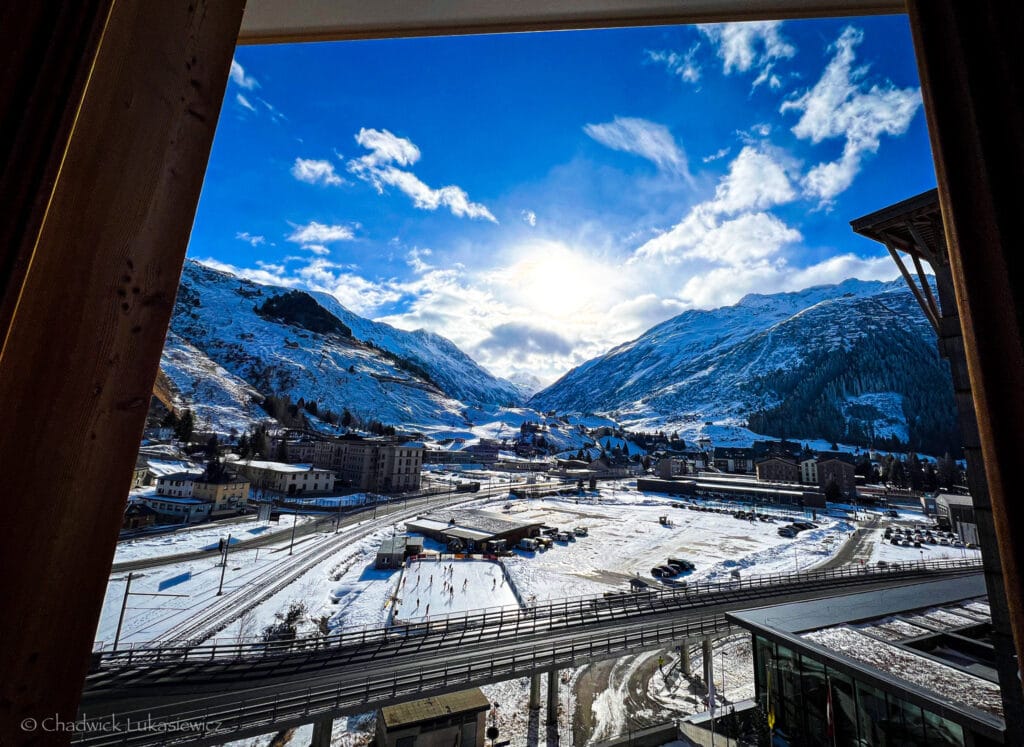
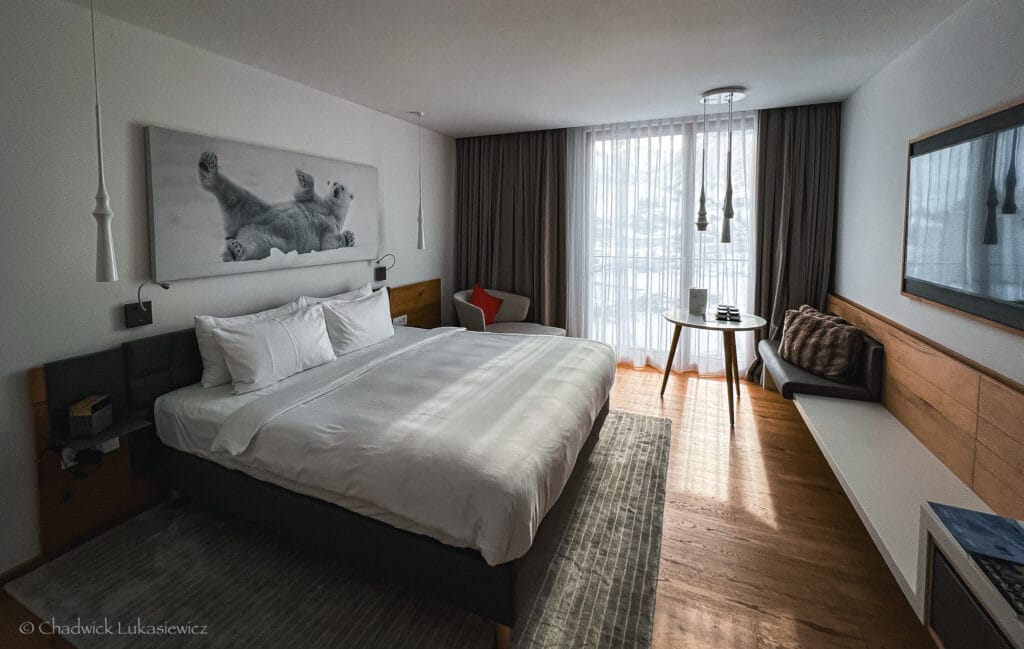
Engelberg
- Beginner-friendly areas
- Accessible from Zurich
- English-speaking instruction
- Perfect for building confidence
Verbier
- Progressive learning zones
- Multiple escape routes
- Advanced terrain options
- Excellent for skill progression
Zermatt
- Year-round snowboarding
- Car-free village (reduced sensory input)
- Extensive terrain choices
- Glacier snowboarding options
- Access with Icon Pass
Crans-Montana
- South-facing slopes (optimal lighting)
- Wide, open runs for comfort
- Less crowded than major resorts
- Family-friendly atmosphere
- New Access with Epic Pass
Transportation Tips for ADHD Travelers

The Swiss rail system is a neurodivergent traveler’s dream – reliable, predictable, and breathtakingly scenic. Here’s my strategy:
Swiss Travel Pass Benefits
- Seamless train travel between towns
- Access to mountain transport
- Flexibility for spontaneous day trips
- Perfect for ADHD adventure planning
Epic Local Pass Integration
- “Free” lift tickets at partner resorts
- Cost-effective for longer stays
- Multi-resort flexibility
- Reduces decision fatigue
Beyond the Slopes






Don’t limit yourself to just the mountains! Some of my most memorable moments came from exploring the surrounding areas:
- Take a scenic train ride to Milan for a day of Italian culture
- Explore the historic charm of Chur (the oldest city in Switzerland!)
- Visit the picturesque town of Göschenen
- Spend at least a weekend in Zurich – trust me, this vibrant city deserves your time


“The Last Supper”




Planning an Executive Function-Friendly Itinerary
Here’s how I structured my time to work with my ADHD brain instead of against it:
- Morning Routines
- Early mountain access for quiet runs
- Consistent breakfast timing
- Weather check and gear prep
- Maintain home rituals where possible
- Afternoon Flexibility
- Open schedule for spontaneous exploration
- Built-in recovery time
- Options for non-snow activities
- Follow your energy levels
- Evening Wind-Down
- Quiet village walks
- Local cuisine exploration
- Next-day preparation
- Gentle transition to rest
ADHD Travel Hack: Use the Swiss Rail app to save your favorite routes and set reminders. It’s like having a personal travel assistant in your pocket!
For more comprehensive strategies on managing travel with ADHD, check out my Ultimate Guide to Neurodiverse Travel.
Essential ADHD Snowboarding Gear Guide
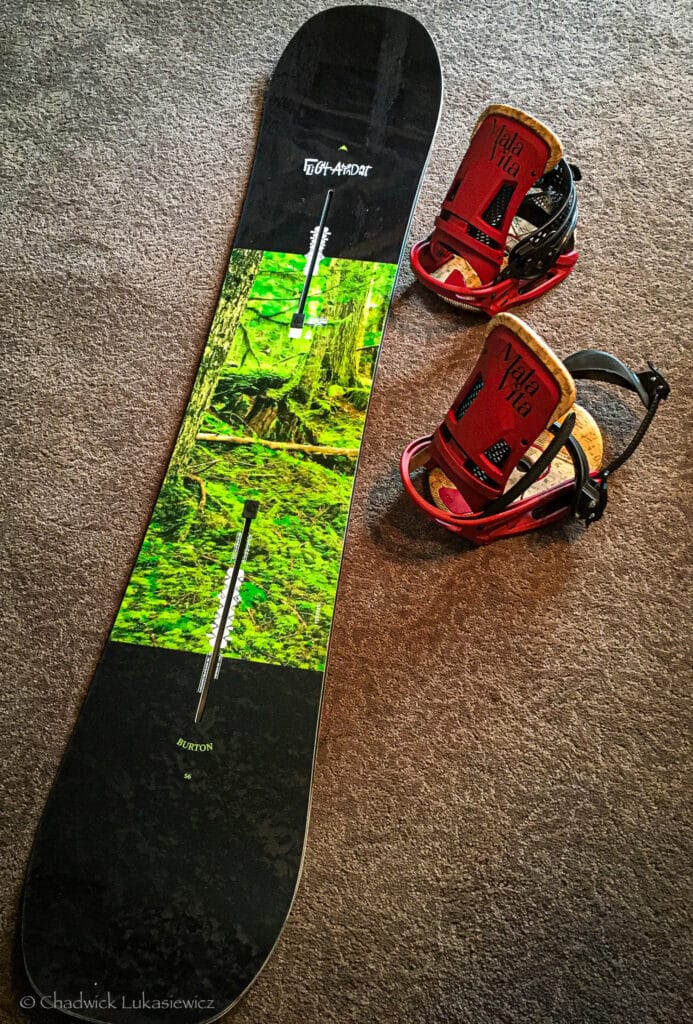
Let’s explore the gear that can transform your mountain experience from potentially overwhelming to absolutely incredible.
As someone who’s refined their setup through countless days on the slopes over 20 years, these are my tried-and-tested recommendations for creating a sensory-friendly snowboarding arsenal.
Sensory-Friendly Equipment Essentials

First, let’s tackle the foundation of comfort and performance. After testing various combinations post-surgery, I’ve found these essentials make all the difference:
Icebreaker 200 Oasis Base Layers
Long Sleeve Crewe Thermal Top ($105)
- 100% merino wool construction eliminates sensory distractions
- Offset shoulder seams prevent backpack irritation
- Extended length stays tucked for consistent comfort
- Perfect for temperature regulation without overload
Leggings with Fly ($105)
- Contoured pouch with functioning fly design Flatlock seams reduce friction points Gusseted construction for mobility Natural temperature management at 200g weight
Smartwool Merino Base Layers
Merino Base Layer Crew ($115)
- Slim-fit with interlock knit construction (276g)
- Shoulder panels eliminate top seam pressure
- Enhanced functionality with aesthetic updates
- Ideal for riders seeking snugger compression
Merino Base Layer Bottom ($115)
- Flatlock seam minimizes chafing points
- Merino-covered elastic waistband
- Traditional fly design for convenience
- Streamlined fit with 228g thermal weight
- Compressed fit for enhanced proprioceptive feedback
- Superior temperature regulation
- Moisture-wicking properties
- Ideal for riders preferring snugger compression
Oakley Flight Deck L ($225)
- Prizm lens technology for enhanced terrain reading
- Wide, unobstructed field of view
- Prescription compatibility
- Rimless design reduces visual distractions
Pro Tip: Keep a lens cleaning kit & backup anti-fog spray in your pocket – clear vision equals better focus!

Innovation in Smart Mountain Tech
The future of mountain tech is here, and it’s particularly exciting for our ADHD minds:
REKKIE Smart Snow Goggles ($349)
- Real-time metrics display
- Performance tracking
- Friend location features
- Augmented reality navigation
Carv Digital Ski Coach ($149 + subscription)
- While designed for skiing, worth noting for tech enthusiasts
- Real-time performance feedback
- Personalized coaching
- Advanced metrics tracking
Game-Changing Gear Solutions: The Burton Step-On Revolution
As someone who remembers the days of sitting in snow to strap in (and the sensory overload of cold, wet pants), Burton’s Step On system is nothing short of revolutionary for neurodivergent riders.
The Burton Step-On System
- Quick-entry bindings that literally click into place
- No more sitting, strapping, or adjusting in the snow
- Think ski boots, but for snowboarding
Why It’s Perfect for ADHD Riders:
- Reduced Executive Function Load
- No more juggling straps and adjustments
- Simple click-in motion becomes muscle memory
- Eliminates decision fatigue around strap tension
- Sensory Benefits
- Consistent pressure distribution
- No hot spots from traditional straps
- Custom-molded liners for perfect fit
- Predictable feel every time
- Time and Energy Management
- Quick transitions mean more riding time
- Less physical energy spent strapping in
- Perfect for short-attention-span runs
- Maintain momentum and focus
Personal Experience: The Step-On system transformed my post-surgery riding. The only and best demo day I’ve ever had. Not having to repeatedly bend and twist to strap in meant I could preserve energy for actual riding and focus on form instead of fighting with equipment.
Noise Management Solutions
Managing auditory input can make or break your mountain experience. Here’s my layered approach:
Apple AirPods Pro 2 ($249)
- Adaptive Transparency for lift awareness and safety
- Powerful wind noise reduction technology
- “Find My” integration prevents loss anxiety
- Perfect balance of awareness and calm
Jaybird Vista 2 ($149)
- Complete waterproof construction
- Secure fit for helmet compatibility
- Sport-focused design
- Reliable for active mountain days
I actually mostly use my Jaybirds right now because the design of the earbud fits more securely with my newest helmet.
Loop Quiet Earplugs ($25)
- Minimal intervention for subtle sound reduction
- Comfortable all-day wear under helmet
- Multiple fit options included
- Natural sound while reducing overwhelm
dBud Volume-Adjustable Earplugs ($59)
- Innovative volume control system
- Fine-tune noise reduction on the fly
- Lanyard keeps them accessible
- Adapt to changing mountain conditions
Pro Tip: While the Sony WH-1000XM5 offers excellent noise cancellation for travel and rest periods, always prioritize helmet safety on the slopes. Save over-ear headphones for apres-ski relaxation.
Organization and Executive Function Support: Essential Carrying Systems

This is where our ADHD brains need the most help, but also where the right tools can become superpowers:
Dakine Low Roller Snowboard Bag (1$75)
- All-in-one travel solution
- Removable boot bag included
- Fits multiple boards or board plus gear
- YKK lockable zippers
- Pro Tip: Many airlines count this and boot bag as one piece—pack your clothes around your gear
- Perfect for protecting gear while maximizing airline allowances
Burton [ak] Surgence Tour 18L Pack ($188.95)
- Vest-like straps for instant gear access without overthinking
- Lightweight design (1.7lbs) reduces sensory burden
- Built-in systems for board and helmet carry
- Thoughtfully organized for the ADHD brain
Alternative: Patagonia Snowdrifter Pack ($239.00)
- Side-accessible lumbar pocket prevents pack-off fidgeting
- Intuitive organization with visual gear separation
- Lightweight frame (1lb 15oz) minimizes sensory load
- Perfect for keeping essentials at your fingertips
Peak Design Tech Pouch ($59.95)
- Origami-style pocket design
- Weather-resistant protection
- Stands upright for easy access
- Perfect for small items that often get lost

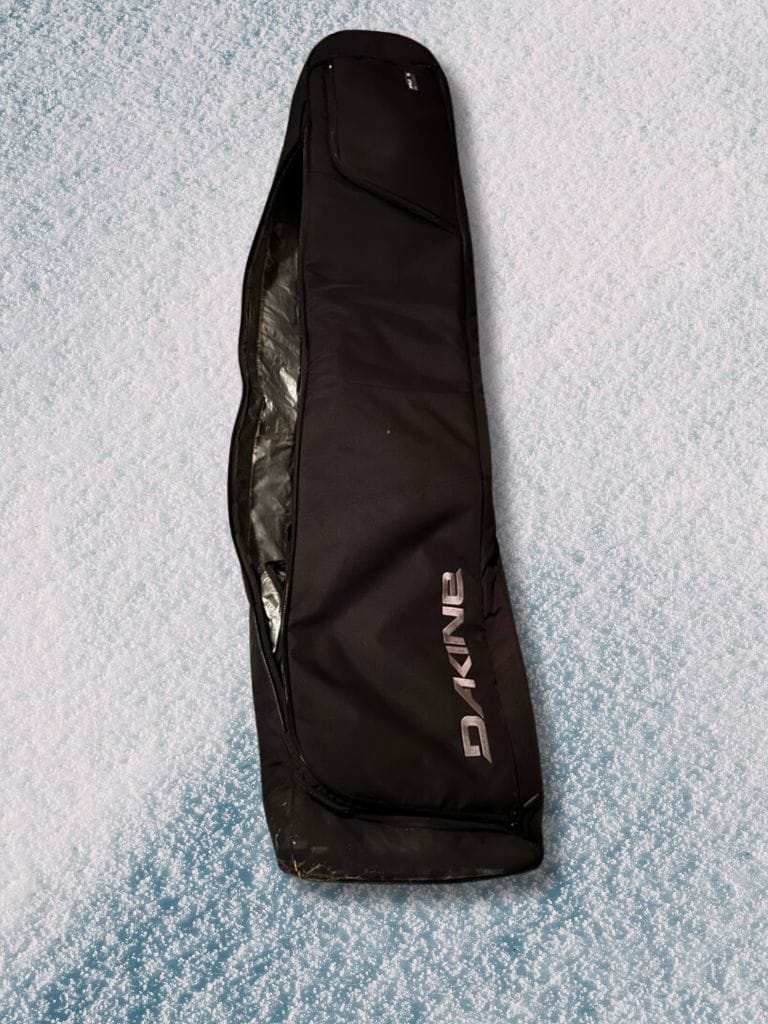
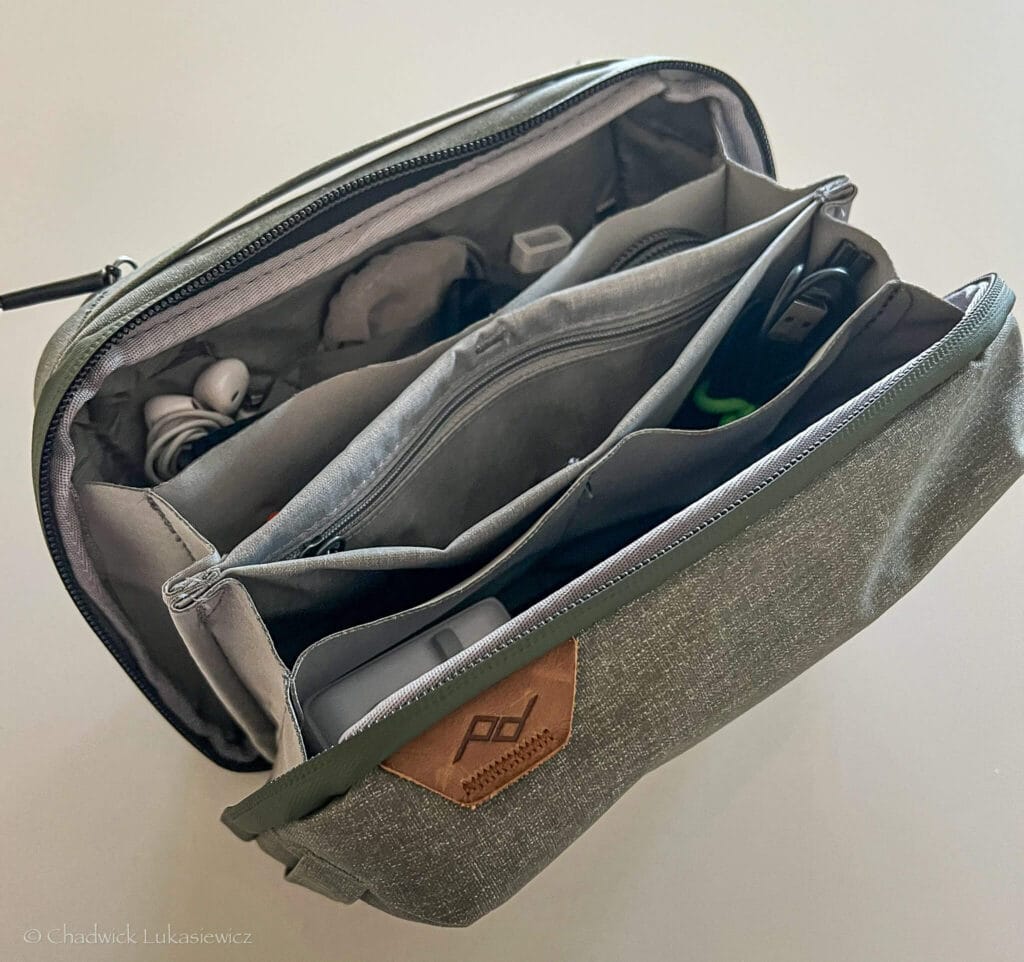
Tech Tools for Mountain Navigation
Because sometimes our ADHD brains need a digital co-pilot:
Garmin fēnix 7X Solar ($899)
- Multi-band GPS for precise location
- Resort maps included
- Extensive battery life
- Emergency features for peace of mind
Apple Watch Ultra 2 ($799)
- Dual-frequency GPS
- Action button for quick starts
- Works seamlessly with ski apps
- Perfect for Apple ecosystem users
Essential Mountain Apps Guide
OpenSnow (Free + Premium)
- Detailed snow forecasts with hourly precision
- Custom powder alerts for your favorite resorts
- Historical weather pattern analysis
- Puts ADHD snow obsession to positive use



Slopes (Free + Premium)
- Real-time run tracking and performance stats
- Visual progress mapping and achievements
- Interactive 3D resort maps
- Gamifies your mountain progression



My Epic (Free)
- Instant lift ticket and pass access
- Real-time lift and trail status updates
- Tracks your vertical feet and Epic Mix stats
- Reduces executive function load at resorts



Swiss Travel Essentials
SBB Mobile
- Swiss transit planning and mobile tickets
- Real-time platform updates
- Store passes in Apple/Google Wallet
- Eliminates transit planning anxiety


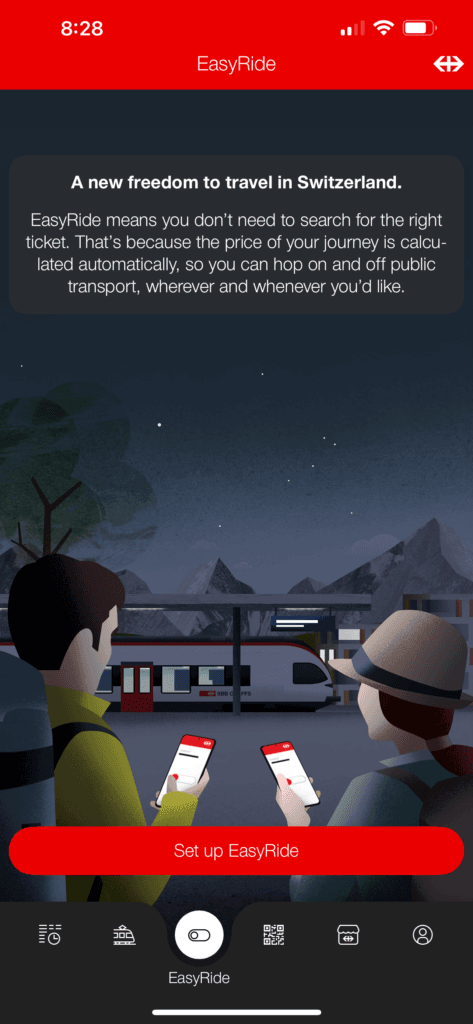
MountainAccess Andermatt
- Live lift and piste conditions
- Resort-specific navigation
- Local events and updates
- Your digital guide to the Swiss Alps



Photography and Documentation Gear

For capturing those hyperfocus moments, memories, and progress tracking:
GoPro HERO13 Black
- Voice commands reduce fumbling
- HyperSmooth stabilization
- Quick-capture mode
- Perfect for ADHD spontaneity
Alternative Action Cam: Insta360 X3
- 360° capture for total run coverage
- Miss nothing with complete surroundings
- Intuitive mobile editing
- Perfect for analyzing technique and progression
Peak Design Mobile Creator Kit ($49.95)
- Universal mount system
- Weather-sealed protection
- Quick-release functionality
- Works with most phone cases
Explore more specific applications for capturing travel memories with ADHD.
Gear Tracking Solutions

Because we’ve all had that moment of “Where did I put my…?”
Apple AirTag 4-Pack ($99)
- Precise location tracking
- Huge finding network
- Simple setup process
- Peace of mind for expensive gear
ADHD Pro Tip: Create a “go bag” with your essential gear that stays packed and ready. It reduces decision fatigue and ensures you never forget crucial items.
For a broader look at essential travel gear for neurodivergent adventurers, including year-round recommendations, check out my complete guide.
Mountain Mindfulness: Focus Techniques for ADHD Riders

Let me share a moment: standing at the top of the Gemsstock in Andermatt, my ADHD mind was racing with a thousand thoughts. But through years of combining clinical expertise with mountain experience, I’ve developed what I call “active mindfulness” – techniques specifically designed for our neurodivergent minds in motion.
The Five Core Mountain Mindfulness Techniques

1. Lift Line Breathing Exercise
- Use the rhythmic sway of the lift line
- Match breath to subtle movements
- Practice 4-4-4-4 box breathing
- Transform wait time into reset time
2. Edge Awareness Practice
- Focus on the feeling of edge contact
- Notice the sound of snow beneath your board
- Feel the subtle weight shifts
- Use sensory input as an anchor
3. Snow Contact Grounding
- Notice three different snow textures
- Feel the varying resistance under your board
- Connect with the mountain’s natural features
- Build environmental awareness
4. Movement Flow Focus
- Link turns with breath patterns
- Create rhythm through terrain changes
- Use natural features as focus points
- Find your riding meditation
5. Mountain View Reset
- Take strategic stops for panoramic views
- Practice visual grounding exercises
- Use scenery as a sensory break
- Reset your nervous system
Pre-Ride Mindfulness Rituals

Creating a consistent pre-ride routine helps our ADHD brains transition into “flow state”:
- Gear Check Meditation
- Turn equipment check into mindful moments
- Feel each buckle and adjustment
- Build body awareness through preparation
- Transform necessity into ritual
- Intention Setting
- Choose one focus for your first run
- Keep it simple and achievable
- Build on success progressively
- Start each session with purpose
Therapist Tip: Remember, mindfulness for ADHD isn’t about emptying your mind – it’s about choosing where to direct your attention and noticing.
Altitude Adjustment Techniques
Living in Colorado taught me the importance of mindful breathing (and a lot of water) at elevation. Here’s my Swiss Alps-tested approach:
- High-Altitude Breathing Pattern
- Slightly deeper than normal breaths
- Focus on full exhalation
- Notice the crisp mountain air
- Maintain oxygen awareness
- Movement-Based Breathing
- Sync breath with traverses
- Use lift rides for oxygen loading
- Practice activation breathing before difficult runs
- Build stamina mindfully
Creating Your Focus-Friendly Ride Ritual

The key to maintaining focus on the mountain is building what I call “mindful momentum“:
- Morning Energy Channeling
- Start with easier runs to build flow
- Progress gradually to challenging terrain
- Use natural ADHD enthusiasm strategically
- Build confidence systematically
- Mid-Day Reset Practices
- Take strategic breaks
- Find quiet spots for micro-meditation
- Refuel mindfully
- Maintain energy balance
- Afternoon Integration
- Notice how your body has adapted
- Celebrate progression moments
- Plan final runs thoughtfully
- End on a positive note
ADHD Insight: Our minds might race, but the mountain teaches us that sometimes the fastest way forward is to slow down and feel each turn.
Mastering Sensory Challenges in Alpine Environments

Managing sensory input in alpine environments is crucial for enjoying your mountain experience. Let me share how I’ve transformed my own anxiety and sensory overwhelm into manageable – even enjoyable – parts of the adventure.
These mountain mindfulness techniques build on the core principles from my guide to managing sensory experiences while traveling.
Managing Lift Anxiety Strategies

For many of us, especially those with a fear of heights, lifts can be particularly challenging. Here’s my tried-and-tested approach:
- Height Management Protocol
- Keep your eyes focused on the chair or pole ahead
- Practice “bubble breathing” (imagine breathing in a protective bubble)
- Use your edges as grounding points when stopped
- Remember: lifts are designed to stop regularly – it’s normal and safe
- Sudden Stop Support for when the lift stops at height (and it will):
- Immediately engage your “safety signal” (touch your jacket zipper or helmet)
- Focus on physical contact points with the chair
- Count nearby lift towers or trees
- Use your noise-canceling earbuds to create a calm bubble
Personal Tip: I keep a specific “lift playlist” ready – instrumental music with a slow, steady beat helps regulate breathing.
Finding Quiet Zones on the Mountain

Every resort has its peaceful pockets – you just need to know where to look:
- Natural Sanctuaries
- Side trails with tree coverage
- Mid-mountain plateaus
- Less-traveled lift lines
- Morning and late afternoon runs
- Built-in Break Spots
- Mountain restaurants before/after peak times
- Base lodge quiet corners
- Mid-mountain patrol/warming huts
- South-facing benches for sunny resets
Weather and Condition Adaptation

Our sensory sensitivity can be both a challenge and an advantage in changing mountain conditions. Here’s how to work with your heightened awareness:
- Visual Adaptations
- Switch lens tints strategically for different light
- Use natural terrain features for depth perception
- Position yourself to use sunlight for terrain reading
- Create visual anchors in challenging conditions
- Temperature Management
- Master the “micro-adjustment” layering system
- Keep emergency warmers in accessible pockets
- Choose merino wool for sensory-friendly comfort
- Listen to your body’s early temperature signals
- Environmental Awareness
- Read weather patterns through sensory cues
- Notice subtle snow texture changes
- Adapt riding style to conditions
- Use heightened sensitivity as your guide
Communication Scripts for Mountain Staff
Having ready-to-use scripts reduces anxiety when interacting with resort staff:
- Lift Operators
- “I might need an extra moment to load/unload”
- “Could you slow the chair for me?”
- “I prefer to ride alone if possible”
- Instructors/Guides
- “I process information best when…”
- “I need additional time to adjust to new techniques”
- “Please let me know when we’re approaching challenging sections”
Sensory Overload Prevention Plan

Create your personal “STOP” protocol:
- Scan your environment regularly
- Take breaks before you need them
- Observe your energy levels
- Plan your escape routes
Pro Tip: Always have at least two designated “reset zones” identified on the mountain map before starting your day.
Managing Sensory Load Throughout the Day
- Morning Calibration
- Start on familiar, quieter runs
- Build sensory tolerance gradually
- Establish your baseline comfort
- Use early morning calm to set your rhythm
- Mid-Day Management
- Avoid peak crowd times on popular runs
- Take a mid-run break for on-mountain lunch
- Use tree runs for natural sound dampening
- Rotate between high and low stimulation areas
- Afternoon Adjustment
- Notice fatigue signals early
- Increase break frequency
- Simplify terrain choices if needed
- Honor your sensory limits
Harnessing ADHD Hyperfocus for Snowboarding Success

Remember when I mentioned discovering that hidden powder stash at Andermatt by impulsively following a local rider? That was hyperfocus in action. Let me show you how to harness this ADHD superpower for an unforgettable mountain experience.
Understanding Your Hyperfocus Windows
I’ve discovered that our ADHD brains enter peak performance states under specific conditions:
- Natural Dopamine Triggers
- Fresh powder mornings
- New terrain exploration
- Perfect carving conditions
- Capitalize on these high-energy moments
- Flow State Activators
- Sequential run patterns
- Rhythm-based movements
- Progressive challenges
- Build momentum through repetition
Channeling Hyperfocus Effectively
Here’s how to make the most of these intense focus periods:
- Skill Development Sessions
- Choose one technique to master
- Use video feedback for immediate adjustments
- Take advantage of hyperfocus for detailed practice
- Transform obsession into progression
- Creative Line Finding
- Let your pattern-seeking mind explore
- Look for unique terrain features
- Trust your instinctive route choices
- Use your divergent thinking
Pro Tip: Keep a GoPro or phone ready during hyperfocus sessions. Our ADHD brains often notice creative lines and opportunities that others miss – document these discoveries for future runs!

Progress Tracking Methods
Turn our detail-oriented tendencies into measurable growth:
- Visual Progress Mapping
- Use the Slopes app for run tracking
- Create photo sequences of technique development
- Record video progression of specific skills
- Build a visual library of improvements
- Achievement Systems
- Set micro-goals for each session
- Track personal records (speed, distance, runs)
- Document new terrain conquered
- Gamify your progression
Balancing Intensity and Recovery

The key is working with our ADHD energy patterns, not against them:
- Energy Management
- Identify your peak performance times
- Schedule challenging runs during high-energy windows
- Plan recovery periods during natural energy dips
- Honor your unique rhythm
- Recovery Integration
- Use lift rides for active rest
- Practice mindful breathing between runs
- Schedule strategic snack breaks
- Maintain sustainable intensity
Goal-Setting Frameworks
Create structure that motivates without constraining:
- Daily Objectives
- One primary skill focus
- Two exploration goals
- Three must-hit runs
- Keep it simple but engaging
- Progress Milestones
- Master specific terrain types
- Perfect individual techniques
- Explore new areas of the mountain
- Build confidence systematically
ADHD Insight: Our hyperfocus isn’t just about intense concentration – it’s about finding that sweet spot where challenge meets capability, creating a natural state of flow that makes time melt away and progression feel effortless.
Recovery and Integration: Beyond the Mountain

Something that’s often overlooked but crucial for our ADHD: how to carry the mountain back into everyday life. After all, those perfect moments of flow and focus on the slopes can teach us valuable lessons about managing our neurodivergence.
Post-Ride Integration Practices






- Evening Wind-Down Ritual
- Photo review and journaling
- Gear reset and preparation
- Body scan and stretch routine
- Process the day’s experiences
- Mindful Documentation
- Record key breakthroughs
- Note successful coping strategies
- Document favorite runs and conditions
- Create a personal playbook
- Savor the Alpine Afterglow
- Enjoy local cuisine and traditions
- Share stories with fellow riders
- Celebrate daily victories, big and small
- Let mountain memories settle in
- Alpine Wellness Integration
- Immerse in Bogn Sedrun’s thermal journey
- Flow from Roman baths to mountain-view saunas
- Practice contrast therapy with hot-cold circuits
- Transform physical exertion into deep restoration
Personal Insight: I keep my Traveler’s Notebook handy to capture those “aha moments” that often come during the post-ride calm. Some of my best therapeutic insights have emerged while processing a day on the slopes.

Applying Mountain Lessons to Daily Life
Remember how we transformed supposed ADHD “challenges” into mountain advantages? These same principles work off the slopes:
- Time Blindness → Flow State: Just as we lose time in perfect powder, we can channel that hyperfocus into daily passions
- Sensory Sensitivity → Environmental Awareness: Our heightened awareness becomes an asset in reading situations
- Impulsivity → Creative Problem-Solving: That spontaneous line choice becomes innovative thinking in daily life
Building Lasting Resilience
The mountains teach us that our neurodivergent traits aren’t limitations – they’re hidden strengths waiting to be unleashed. Whether you’re carving through fresh powder in the Swiss Alps or navigating daily challenges, remember: sometimes the best way to find focus is to embrace the beautiful chaos.
Ready to plan your own neurodivergent alpine adventure? Remember, every turn on the mountain is another step in discovering just how capable your unique mind can be.
Final ADHD Insight: The next time someone suggests you need to “calm down” or “focus more,” just smile and tell them you’re saving that energy for your next run down a Swiss mountain. After all, what others see as “too much” is often exactly what makes us extraordinary.
Finding Your Flow: Embracing ADHD on the Swiss Slopes

As we wrap up our journey through the Swiss Alps, remember that ADHD isn’t just something to manage on the slopes – it’s often our secret weapon. Whether you’re carving your first turns or returning after surgery like me, the mountains offer a perfect playground for our unique minds.
From the rush of fresh powder to quiet moments on the lift, every aspect of snowboarding can become a tool for growth, focus, and joy. Each run, each challenge, each moment of perfect flow is a testament to how our neurodivergent traits become our greatest strengths in the right environment.
The mountains have taught us that what others might see as limitations are actually unique advantages waiting to be discovered:
- Our sensitivity to sensory input becomes heightened awareness on the slopes
- Our need for movement transforms into perfect edge control
- Our impulsivity leads to creative line choices
- Our hyperfocus reveals details others miss
Sometimes the best way to find focus is to strap on a board and embrace the beautiful chaos of the slopes.
Ready to plan your own ADHD-powered alpine adventure?
Well, see you out there on the slopes!

Some of the links in this post are affiliate links, meaning I earn a commission if you click through and make a purchase – at no additional cost to you. As a neurodivergent traveler and mental health professional, I only recommend products I’ve personally tested and found genuinely helpful in managing AuDHD symptoms, sensory needs, or travel challenges. Read our full affiliate disclosure in our privacy policy. And remember: your unique needs matter most when choosing tools for your journey!
References
Ekman, E., Hiltunen, A., & Gustafsson, H. (2021). Do Athletes Have More of a Cognitive Profile with ADHD Criteria than Non-Athletes?. Sports (Basel, Switzerland), 9(5), 61. https://doi.org/10.3390/sports9050061
Groen, Y., Priegnitz, U., Fuermaier, A. B., Tucha, L., Tucha, O., Aschenbrenner, S., Weisbrod, M., & Garcia Pimenta, M. (2020). Testing the relation between ADHD and hyperfocus experiences. Research in Developmental Disabilities, 107, 103789. https://doi.org/10.1016/j.ridd.2020.103789
Schulze, M., Lux, S., & Philipsen, A. (2020). Sensory processing in adultADHD—A systematic review. https://doi.org/10.21203/rs.3.rs-71514/v1

